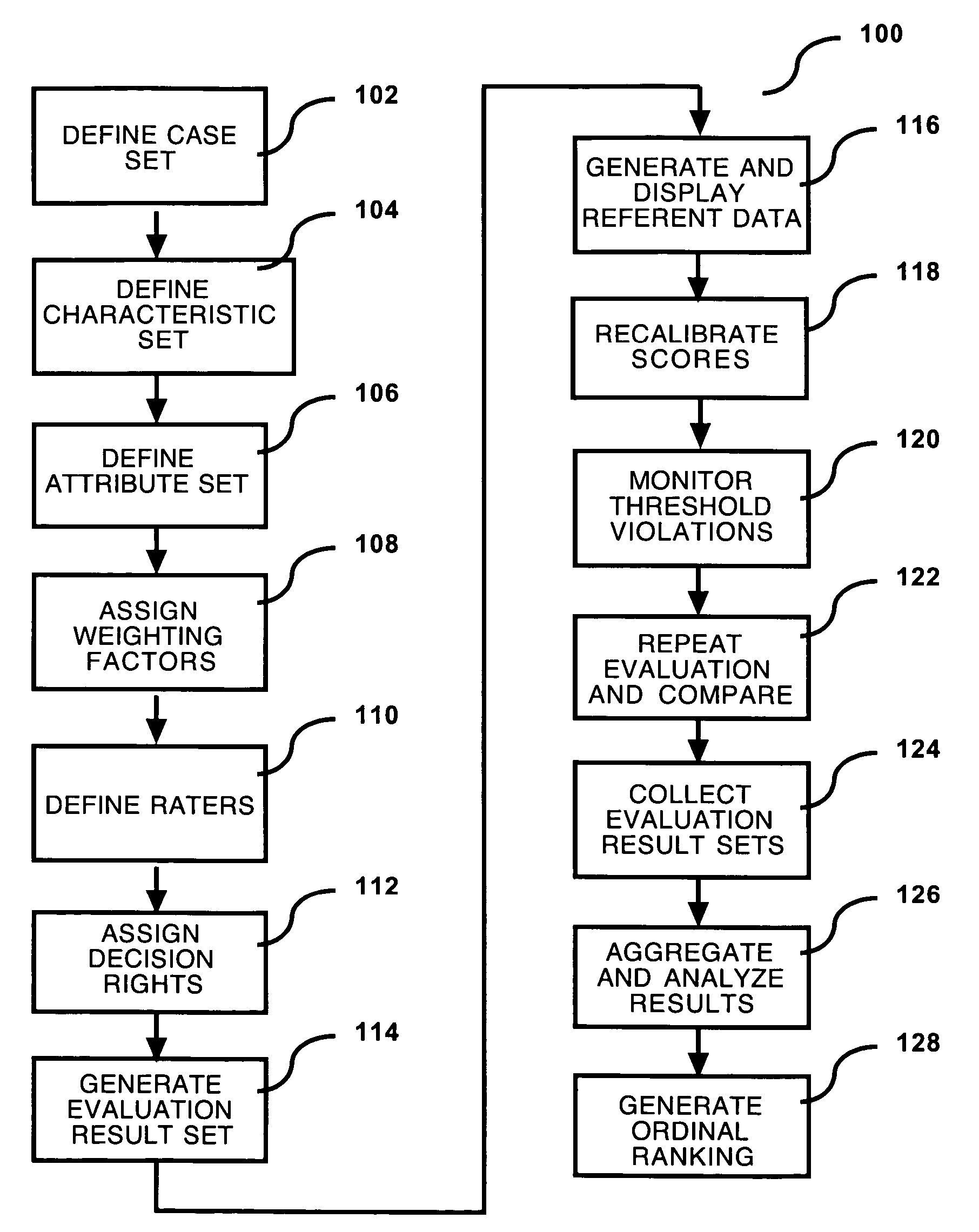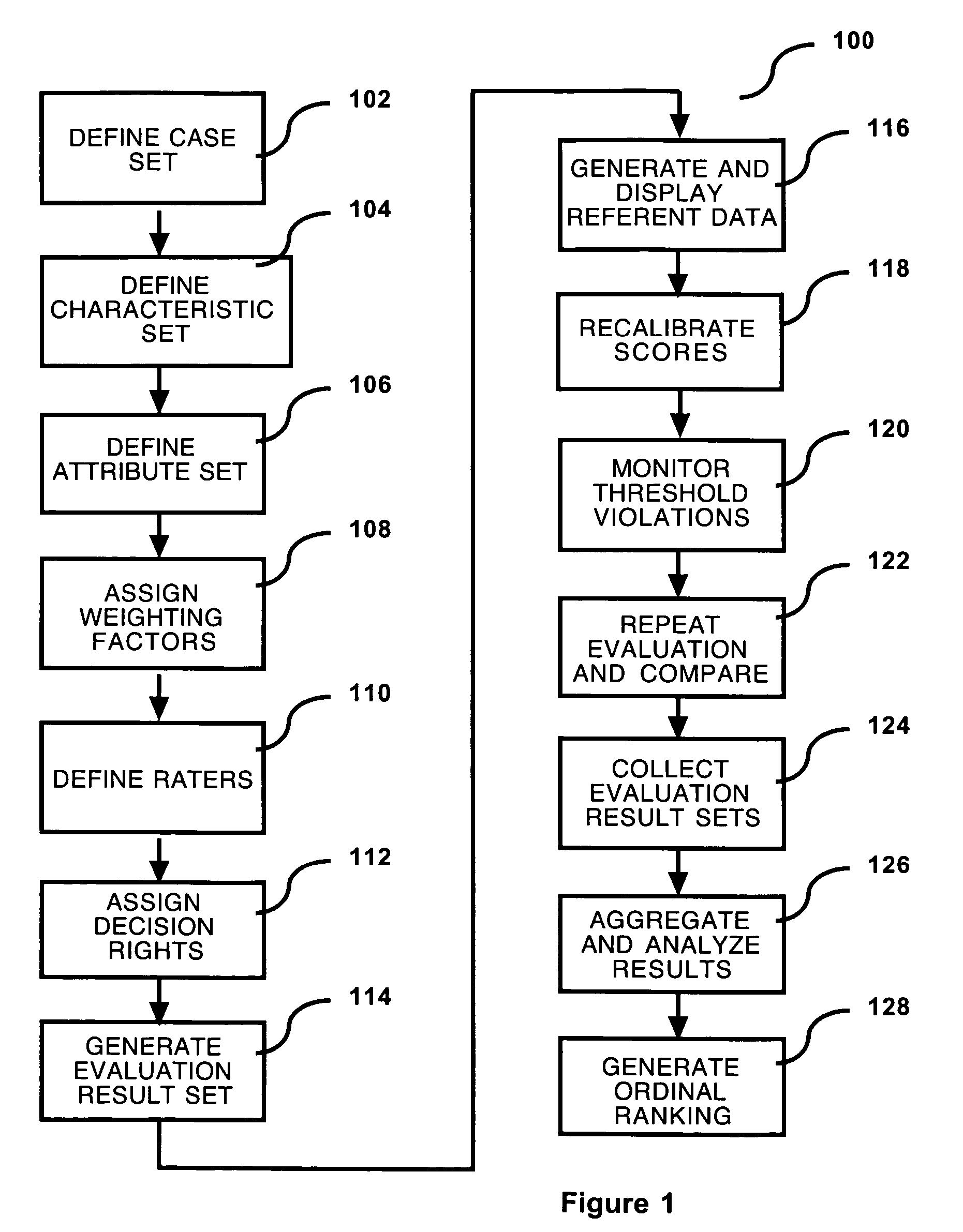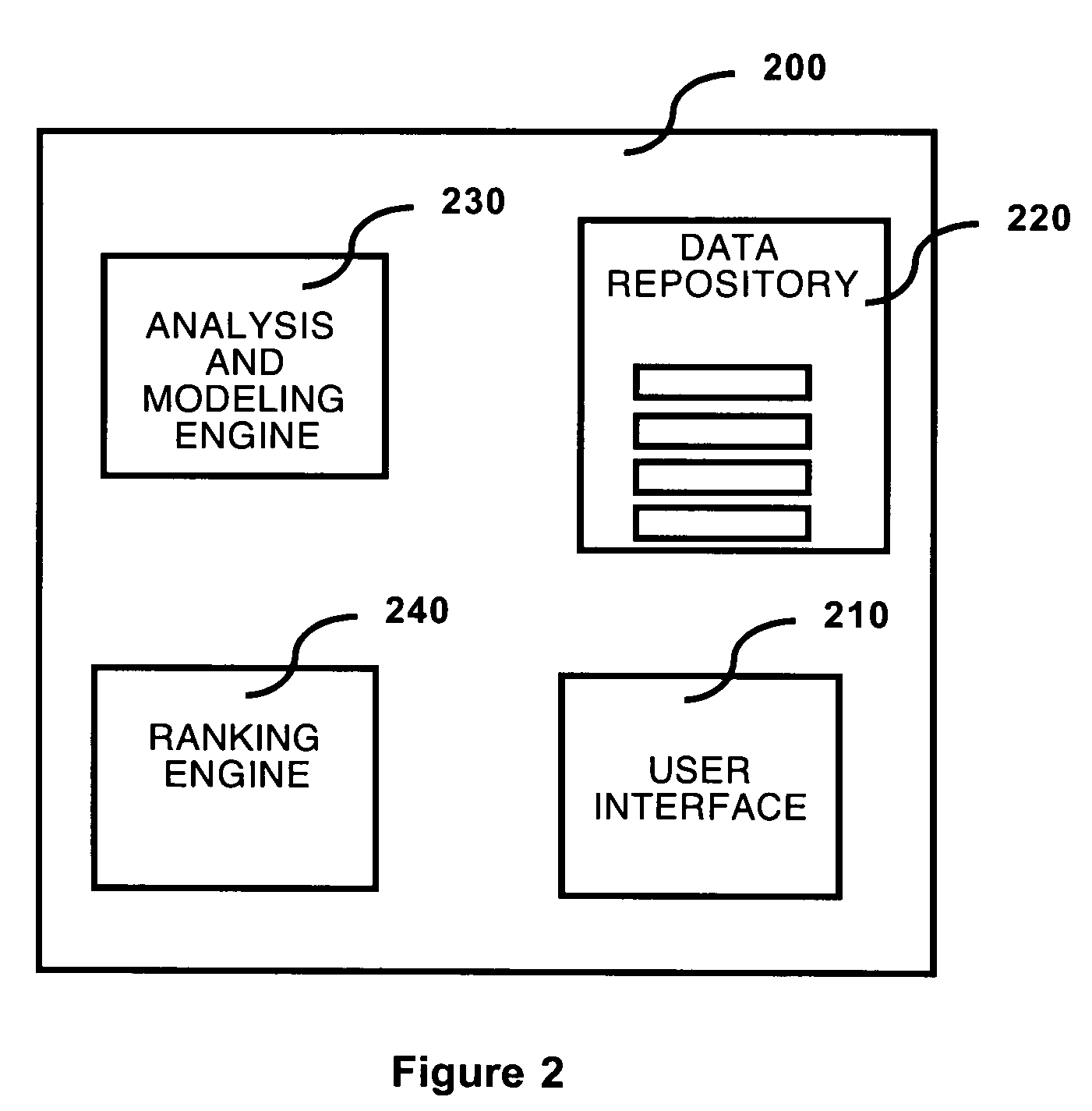Method for ordinal ranking
a ranking method and ordinal ranking technology, applied in the field of decision modeling systems, can solve the problems of not being valid, facilitating a process, and affecting the maker, and unable to provide repeatability and validity, and not allowing diagnostic reporting or illustrating discrepancies
- Summary
- Abstract
- Description
- Claims
- Application Information
AI Technical Summary
Benefits of technology
Problems solved by technology
Method used
Image
Examples
Embodiment Construction
[0014]FIG. 1 is a flow diagram representing steps in an exemplary method 100 for ordinal ranking. The ordinal ranking can be used to determine a solution set. The solution set is a subset selected from a plurality of cases (i.e. alternative selections) in a decision process based on a set of criteria. In step 102 each of a plurality of cases is identified. The cases represent entities that are to be rated and ranked and collectively comprise a case set. In step 104 a characteristic set containing one or more characteristics is defined. Each of the characteristics in the characteristic set represents an informational aspect with regard to the cases that has been identified as relevant to the ranking process. For example, where the cases represent employees, characteristics can include salary, educational credentials, years of service and other similar non-rated aspects. Values can be assigned to each characteristic for each case. In step 106 an attribute set containing one or more at...
PUM
 Login to View More
Login to View More Abstract
Description
Claims
Application Information
 Login to View More
Login to View More - R&D
- Intellectual Property
- Life Sciences
- Materials
- Tech Scout
- Unparalleled Data Quality
- Higher Quality Content
- 60% Fewer Hallucinations
Browse by: Latest US Patents, China's latest patents, Technical Efficacy Thesaurus, Application Domain, Technology Topic, Popular Technical Reports.
© 2025 PatSnap. All rights reserved.Legal|Privacy policy|Modern Slavery Act Transparency Statement|Sitemap|About US| Contact US: help@patsnap.com



